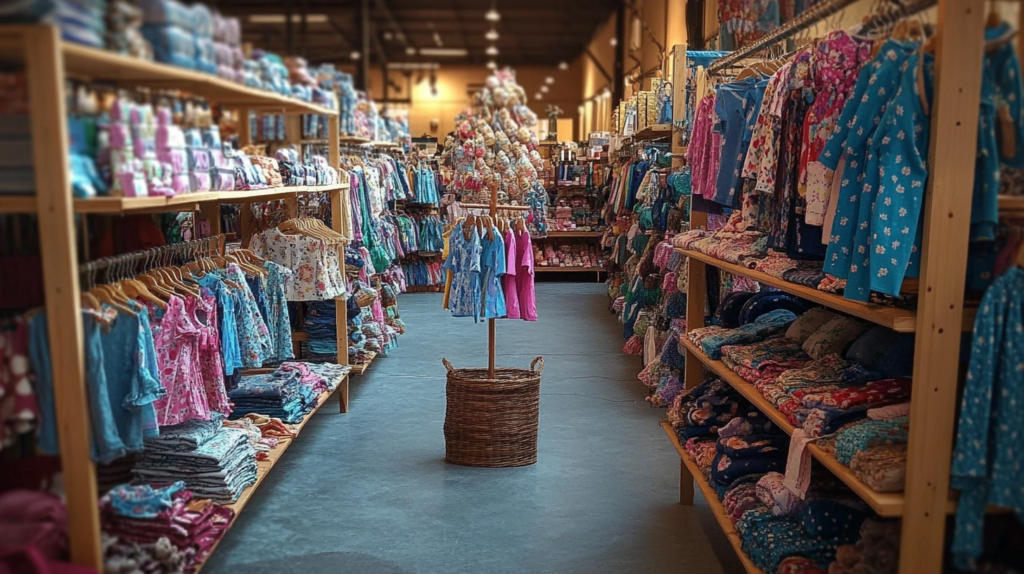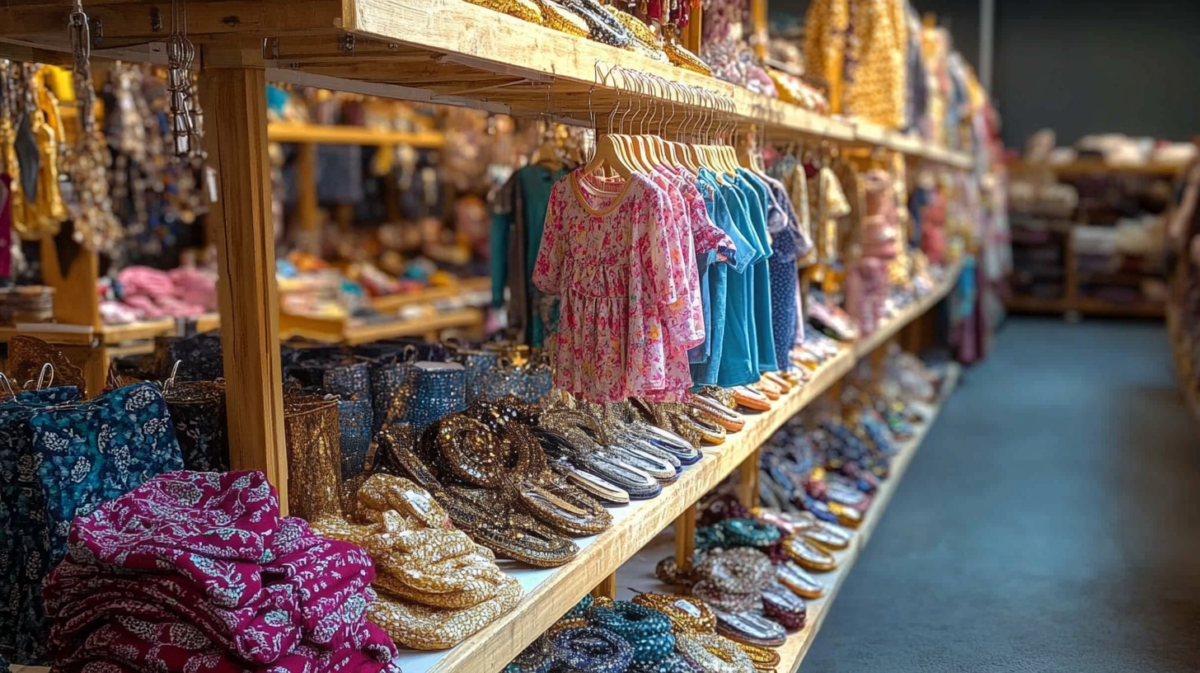The environmental impact of fast fashion and conventional housing has prompted a revolutionary change in how Dubai’s residents approach both their wardrobes and living spaces. Recent statistics show that UAE residents generate approximately 2.3 kg of waste per person daily, with clothing and household items constituting a significant portion. However, new initiatives and innovative approaches are rapidly transforming these sectors, creating a more sustainable future for the next generation.
This transformation extends beyond individual choices to influence entire communities, with sustainable housing developments and eco-friendly fashion boutiques becoming increasingly prevalent across the emirate. Local designers and architects are leading this change, incorporating traditional Middle Eastern wisdom about desert living with cutting-edge sustainable technologies and materials.
The convergence of sustainable fashion and eco-conscious housing represents a holistic approach to environmental stewardship that is uniquely suited to Dubai’s ambitious vision for the future. This comprehensive examination explores how these two seemingly distinct sectors are interweaving to create a more sustainable lifestyle for families in the UAE.
Desert Blooms: Sustainable Textiles in Children’s Wardrobes
The evolution of sustainable children’s fashion in Dubai has taken an unexpected turn with the introduction of locally-sourced desert cotton and regenerated textile materials. Studies indicate that approximately 85% of textile waste in the UAE could be recycled or upcycled, yet only 13% currently undergoes this process. Local designers are addressing this gap by creating innovative children’s wear using materials derived from desert-adapted plants and recycled fabrics.
Dubai’s climate presents unique challenges for sustainable children’s clothing, requiring materials that are both environmentally friendly and suitable for extreme temperatures. Innovative textile manufacturers have developed fabrics that incorporate cooling properties from traditional Bedouin weaving techniques, while maintaining modern sustainability standards. These materials typically require 70% less water in their production compared to conventional cotton.
Local artisans are revolutionizing the children’s fashion industry by introducing traditional embroidery techniques that utilize eco-friendly dyes derived from native desert plants. These natural dyes not only reduce chemical exposure for children but also support local agricultural initiatives, with recent programs establishing sustainable dye gardens that have created employment for over 200 local artisans.
The integration of smart textile technology with sustainable materials has resulted in children’s clothing that adapts to temperature changes while maintaining minimal environmental impact. Recent innovations include fabrics embedded with phase-change materials derived from natural sources, capable of storing and releasing heat as needed, reducing the need for excessive air conditioning.
Architectural Alchemy: Transforming Family Spaces
Dubai’s architectural landscape is witnessing a remarkable transformation as developers incorporate biomimetic design principles inspired by desert ecosystems. New family homes are being constructed with living walls that naturally cool interior spaces, reducing energy consumption by up to 30% compared to conventional cooling systems. These vertical gardens also produce oxygen equivalent to that of 25 mature trees per household annually.
The integration of smart home technology with traditional Arabic architectural elements has created a new paradigm in sustainable family living. Wind towers, a traditional Gulf architectural feature, are being reimagined with modern materials and automated systems, providing natural ventilation that reduces air conditioning needs by up to 45% during peak summer months.
Recent developments in sustainable construction materials have led to the creation of self-cooling concrete mixtures incorporating local desert sand and recycled materials. These innovative building materials reflect up to 70% more sunlight than traditional concrete while storing thermal energy for nighttime temperature regulation, resulting in significant energy savings for family homes.
The implementation of water recycling systems in new family developments has revolutionized resource management in Dubai’s residential sector. Advanced greywater systems can recycle up to 95% of household water for irrigation and non-potable uses, reducing water consumption by an average of 40% per family unit.
Nurturing Nature: Biophilic Design in Children’s Spaces
The incorporation of biophilic design principles in children’s rooms and play areas has demonstrated remarkable benefits for both environmental sustainability and childhood development. Studies conducted in Dubai’s sustainable housing communities show that children living in biophilic environments spend 35% more time engaging in creative play and demonstrate improved cognitive development compared to those in conventional settings.
Innovative designers are creating multifunctional furniture pieces that incorporate living plants and natural materials, serving both as play structures and air purification systems. These pieces typically contain specialized hydroponic systems that require 90% less water than traditional potted plants while providing up to 15% higher oxygen output.
The integration of natural light optimization systems in children’s spaces has revolutionized the approach to sustainable interior design. Smart windows with bio-responsive tinting adjust throughout the day to maximize natural light while minimizing heat gain, reducing lighting energy consumption by up to 60% and creating healthier circadian rhythms for children.
Educational gardens integrated into family living spaces are becoming increasingly popular, with recent projects demonstrating that children who participate in maintaining these gardens show a 40% increase in environmental awareness and consume 25% more vegetables than their peers. These gardens typically incorporate desert-adapted species that require minimal irrigation while providing educational opportunities about local ecosystems.

Circular Symphony: Waste Reduction in Family Living
Dubai’s innovative approach to waste management in family homes has created a new paradigm for sustainable living. Smart waste sorting systems equipped with AI technology have been installed in sustainable housing developments, reducing household waste by up to 50% through automated segregation and recycling processes. These systems have successfully diverted over 1,000 tons of waste from landfills in the past year alone.
The implementation of community composting programs specifically designed for family residences has transformed organic waste management. Each participating household contributes an average of 2.5 kg of organic waste daily, which is converted into nutrient-rich compost used in community gardens. This initiative has reduced methane emissions equivalent to removing 500 cars from the road annually.
Innovative packaging solutions for children’s products have emerged from local entrepreneurs, introducing biodegradable materials derived from date palm waste. These packaging alternatives decompose 75% faster than conventional plastics and have already replaced over 100,000 kg of traditional packaging materials in Dubai’s retail sector.
The introduction of textile recycling programs specifically targeting children’s clothing has created a closed-loop system within communities. Recent data shows that participating families reduce their textile waste by 65% while saving an average of 3,000 AED annually through clothing exchange programs and upcycling workshops.
Tech-Enhanced Traditions: Smart Solutions for Family Sustainability
The marriage of traditional Middle Eastern family values with smart technology has created unprecedented opportunities for sustainable living. AI-powered home management systems, calibrated to respect cultural practices while optimizing resource usage, have demonstrated energy savings of up to 40% in family homes while maintaining traditional lifestyle patterns.
Cultural adaptation of sustainable technologies has led to innovative solutions such as smart prayer room systems that automatically adjust lighting and temperature based on prayer times while utilizing solar power. These systems reduce energy consumption during peak usage periods by 35% while preserving important cultural practices.
The integration of traditional Arabic hospitality customs with sustainable practices has resulted in smart kitchen systems that optimize food storage and preparation while reducing waste. These systems have helped families reduce food waste by 45% while maintaining the ability to accommodate traditional large family gatherings.
Modern interpretations of majlis spaces incorporate sustainable materials and smart climate control systems that adjust based on occupancy patterns and natural ventilation opportunities. These reimagined social spaces consume 50% less energy than conventional air-conditioned areas while preserving the cultural significance of family gathering spaces.
Green Horizons: Economic Impact of Sustainable Family Living
The economic implications of sustainable family living in Dubai have created ripple effects throughout the local economy. Families investing in sustainable housing solutions report average monthly utility savings of 1,200 AED, while sustainable children’s fashion choices result in annual savings of approximately 5,000 AED through reduced consumption and increased durability.
The growth of sustainable family-oriented businesses has generated over 3,000 new jobs in Dubai’s green sector, with particular emphasis on services supporting sustainable home maintenance and eco-friendly children’s products. Local entrepreneurs have established more than 200 new businesses focused on sustainable family solutions in the past year alone.
Investment in sustainable family housing has demonstrated remarkable returns, with eco-friendly properties showing 15% higher appreciation rates compared to conventional properties. Additionally, the implementation of sustainable features has reduced maintenance costs by an average of 30% over five years.
The development of sustainable family-oriented communities has attracted significant foreign investment, with over 2 billion AED committed to green housing projects in the past two years. These investments have stimulated local economic growth while creating innovative models for sustainable urban development that are being studied and replicated globally.
